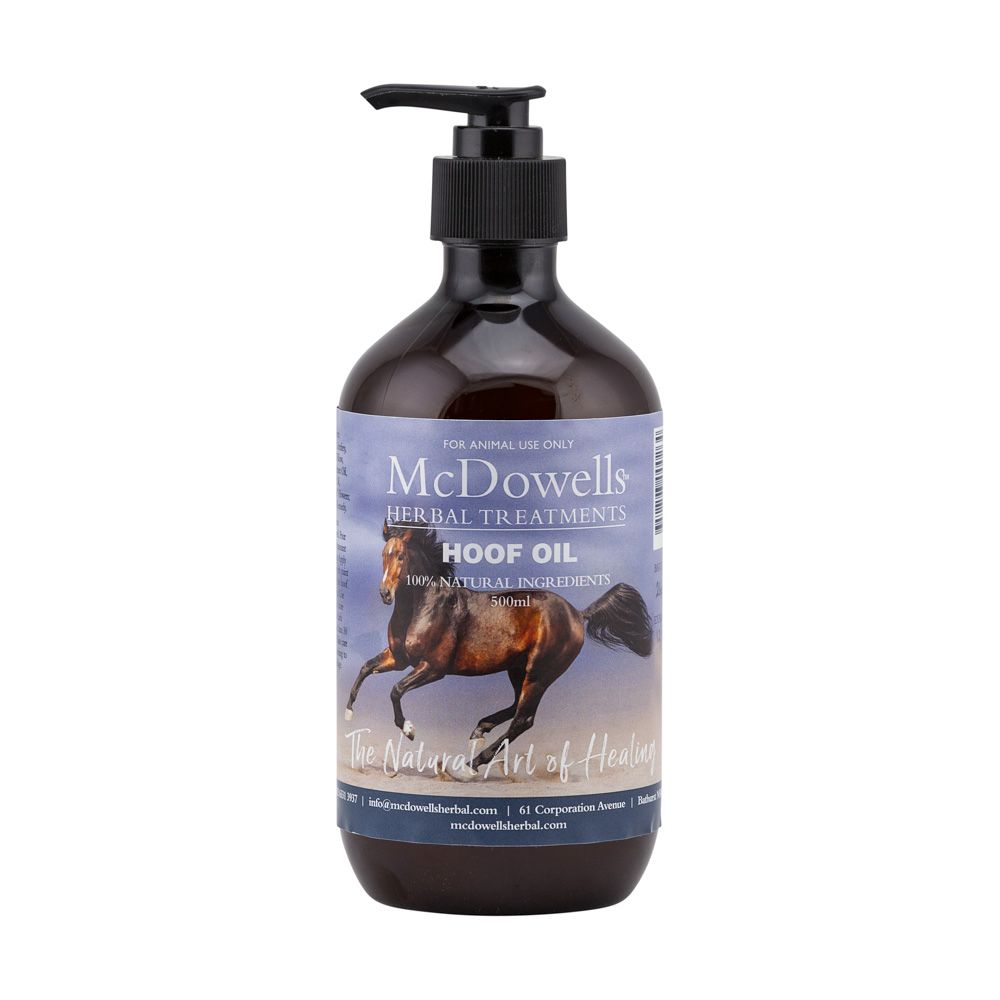Spring is with us, and so is the dreaded laminitis! Over the last 4 weeks McDowells Herbal have been inundated with requests for information and treatment of the laminitic horse or pony.
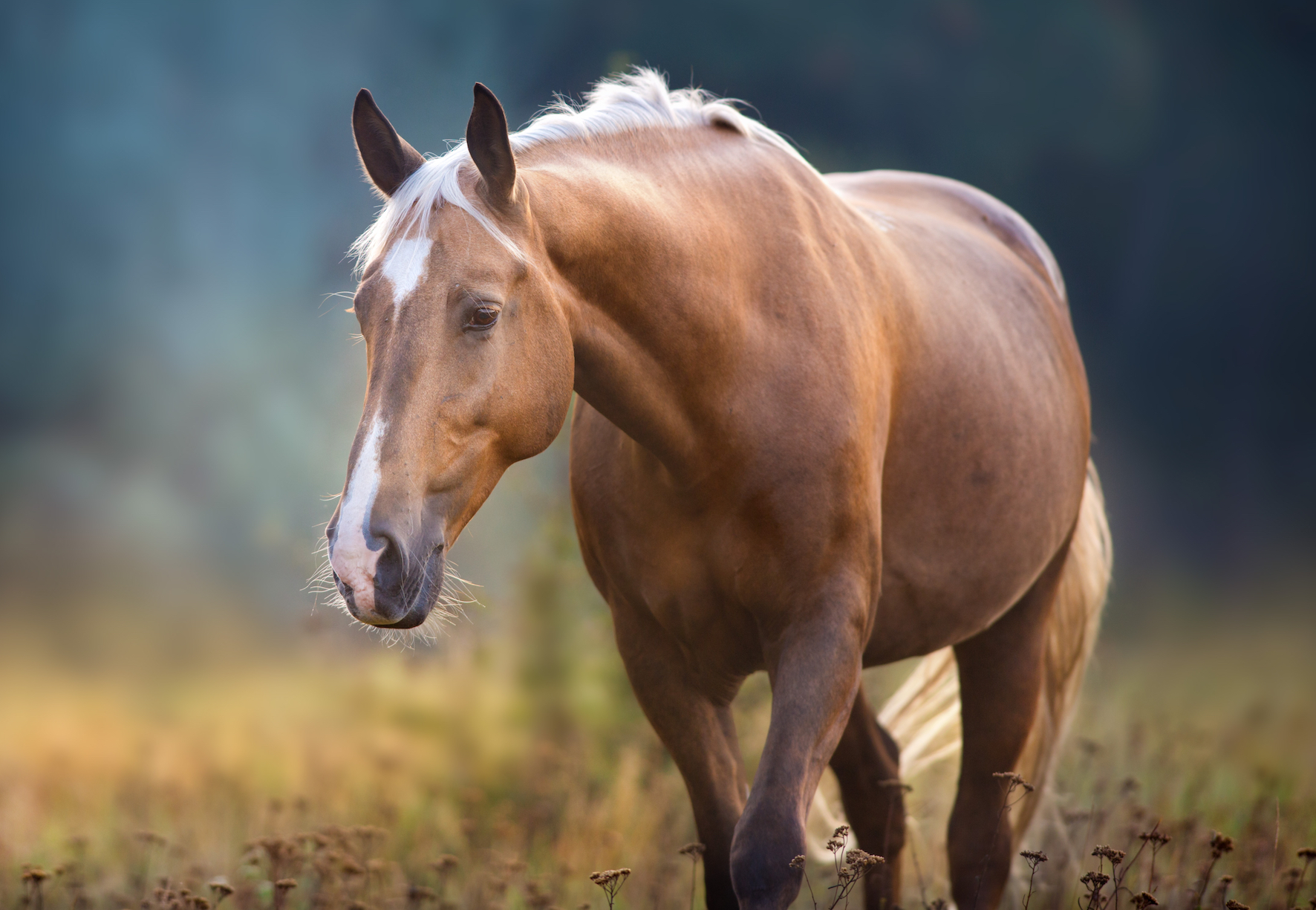
Step 1: Day 1
Remove the cause of the laminitis
Green grass (especially from fresh small fast growing grasses) is critical. Do not re-introduce the horse or pony to pasture until you have full knowledge of the degree of the condition. Do not feed lucerne hay.
Feed 3 hour soaked dry grass hay or old oaten hay, Speedi-beet and appropriate herbs.
Weight must be reduced and appropriate feeds given to help restore metabolic harmony. A natural mineral supplement with a magnesium and chromium supplement is advised here. I prefer kelp (seaweed). Do not fast (starve) your pony or horse for longer than 12 hours.
Ponies and horses that have been fed processed packet feeds, overfed and/or obese are most likely now in a state of what we call 'insulin resistance' or metabolic syndrome.
I suggest our Metabolic-S (with hops added) at this stage to deal with metabolic toxins, along with rosehips tea and fenugreek tea.
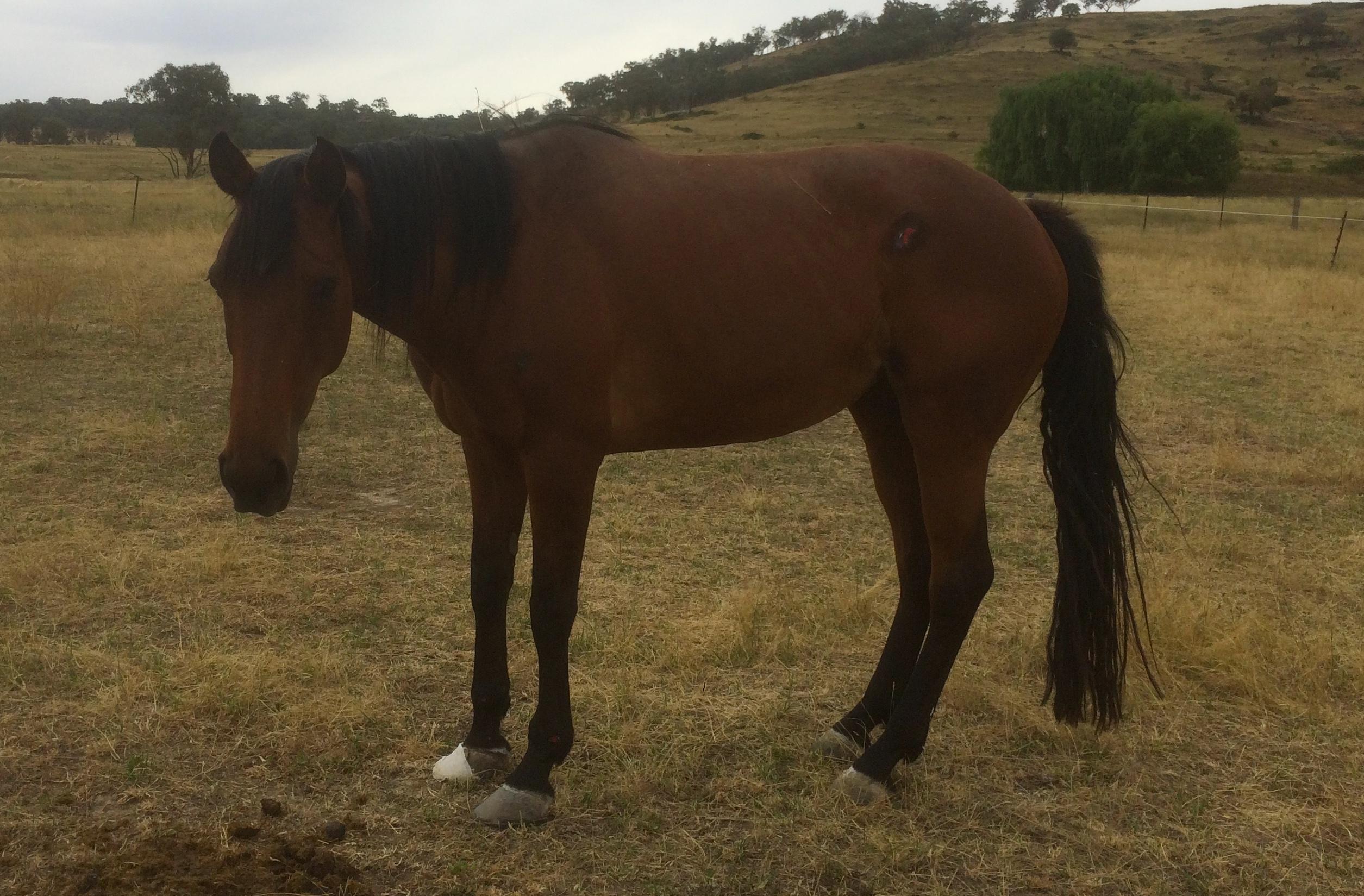
Pain and inflammation: a horse struggling to walk
Step 2: Day 1 to Day 10
Stress Reduction and Pain Management.
Stress plays a role, as pain increases cortisol into the blood stream. This can upset the insulin/blood sugar balance . Cortisol is associated with the FILIGHT/FIGHT response and it impairs the insulin response, thereby compounding the blood sugar levels so that the animal has quick and available energy to use.
At this point, it may be appropriate to give judicious levels of Bute to manage the pain. You want to give just enough to take the edge off the pain, but not enough that the horse or pony is able to run around and do further damage. I have found that just 1 small dose is sufficient for 72 hours in most cases. Give for a maximum of 5 days. Bute, of course, does also help with the circulation to the laminae and you are able to decrease damage here if you manage this well. Do not let the horse run around. Use the McDowells Hoof Oil to encourage circulation to the hoof. Use our Alleviate to asssit in managing inflammation.
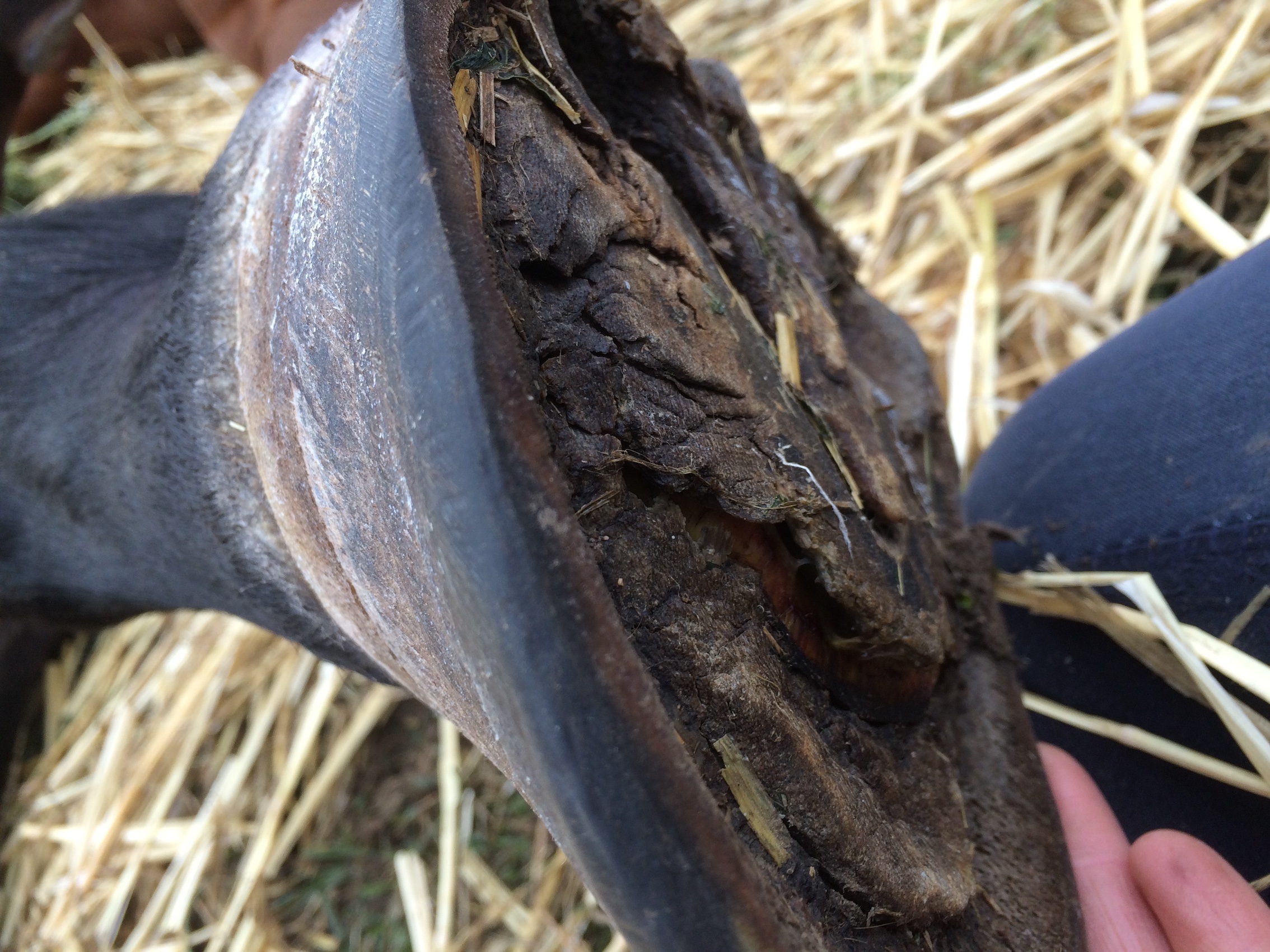
Extreme case: pedal bone penetration
Step 3: Day 1 to Day10
Hoof Care
Environment: Deep sand and bedding is required to help your horse cope with pain and if rotation has occurred you need the deep sand and bedding for comfort. Most horse will lay down with laminitis if it is acute and chronic.
Shoes MUST come off immediately, and correct trims that balance the hoof are the best. Trimming should be done every 4 weeks. DO NOT LIFT THE HEAL UP! The idea is the deep flexor tendon pulls the pedal bone downward. By lifting the heal it is assumed that the DFT is prevented from having this influence. This reduces pain. However, I suggest this can have a negative effect in that it can actually promote a pedal rotation - contrary to what many farriers and Vets say.
If the horses is put in pads you can use the pads as a slight lift if required. What is important is that the lift is not too high.
It is critical to manage the hoof care well. If not, you can get into a cycle of pain/stress/increased blood sugar/more laminitis/founder results. This is to be avoided at all costs!
I would only lift up the heal you have found that you are giving too much Bute. This creates a situation that is more to do with digestive, metabolic and toxic problems as a result of the Bute overdosing.
After the initial 5 days, the horse/pony should be moved to a soft sand yard, so that movement is possible. Eliminate the Bute totally if possible or give every 3- 5 days if required to manage pain.
You can trim their feet and use Mac boots and pads, if required to move to the next stage. I have used easy walkers, and they can be glued on.
If the actual laminitis itself is managed (ie. the cause removed*), it will take approx 10 days to move the next stage of healing.
(*This does not apply to stress related laminitis or laminitis related to surgery or a retained placenta. This is a little more complicated, and the stress cycle must be managed with the issue of toxicity and drugs).
Step 4: Day 10 to 4 Months
Exercise
If you managed the first 3 stages well, you should be in a situation where you can now walk your horse and pony daily. No riding!
It will take 4 months for the integrity to be restored to the heel and frog. This is when you will see in a mild laminitis case that you will be able to ride. More severe cases take longer to reapir.
A severe case means that you have founder - a pedal bone rotation that will take 12 months to grow out.
If you have had a serious episode this is when you will see that your horse or pony will not be able to sustain work on a lunge in the sand. Do not lunge the early laminitic horse- it causes too much pressure on the hoof in an unbalanced way, causing more stress and tearing. Do not ride your horse just yet- it will be 8 - 12 months before you can do this.
Feed our Tendon and Bone mix, keep up Laminitis Program and use the hoof oil daily.
Step 5: Day 20 to 12 months
Feeding and when to put out to pasture
If you have successfully managed the first 4 stages well, you will be tempted to put your horse back out on the pasture.
In some cases you can safely do this, but, and it's a big BUT.....make sure that your safe to do so.
Is the pasture now old and a bit dry, with no new shoots? (if it has rained recently, forget it- the little devils that are the problem are coming up , and the pre-laminitic horse just loves nibbling away on these)
If it looks safe, you can put your horse out for a few hours only, and make sure that he is out with other horses to keep him moving and playing. It's a good idea to feed speedi-beet just prior to putting your horse out.
Just after rain is a no-go. Cloudy days pre-rain are the best days. Make sure as well that all dew is gone, and a big frost is a sign that the pasture is stressed and high sugar content is indicated here.
Always keep your horse/pony locked up at night, as horses tend to eat the most just before midnight.
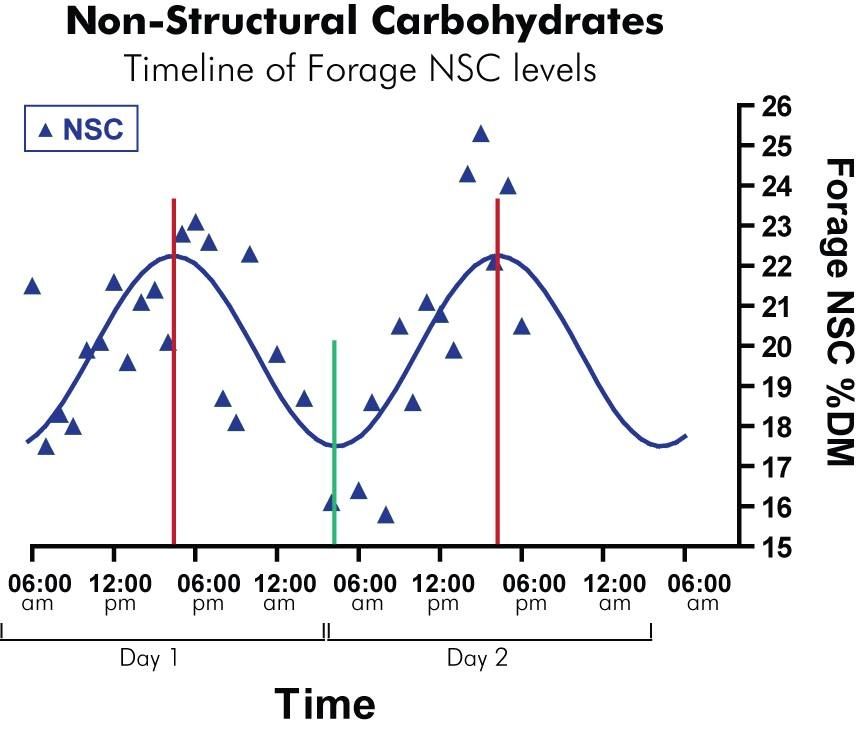
The graph above illustrates the the levels of non-structural carbohydrates (NSC) in grasses at different times of the day. This will obviously vary depending on location and time of the year but by keeping a horse locked in except for the very early hours of the morning will reduce consumption of NSC and therefor lessen risk of laminitis. The lowest levels are between 1am and 8am and the highest in the late afternoon/evening (when the sun has been out for the longest period).
Insulin resistant and Cushing's syndrome horses
You have got through the worst of it now, and now you may have a really skinny horse that you can't seem to feed anything to at all, or you may have a fat horse that seems to be a breatharian - he simply has to smell grass to get fat!
Both of these cases are distressing as they do not seem to fit the normal pattern of "get fat, get laminitis, lose weight, get better".
This is because these horses have had their systems so overloaded that their metabolism is just not working as it should.
In these cases we need to really work hard at choosing the right feeds, supplementing the right herbs and restoring the balance.
Here I suggest a 12 week course of our metabolic re-conditioners. These herbs really do wonders for the metabolism, supporting the thyroid, the pancreas, the endocrine system, the adrenals and the liver of course.
Such a combination really gets things moving along. You may find that in chronic older Cushing's horses we need to keep these herbs going at half dosage after the initial 3 months treatment indefinitely. Most horses though do find their balance in the 3 months, and we really only need to keep chamomile, rosehips and dandelion as the mainstay herbs.
For the skinny horses that you no longer can feed even protein style feeds (usually these horses are the horses that have been overfed packaged feeds and have never done much real 'horsey' living – show horses come to mind) we need to treat with the same re-conditioners, but we can feed rice bran, rice bran oil, soaked barley, crushed millet and crushed linseed, oaten chaff, 24/7 dry grass hay (at least 2 years old) and the mineral supplements. You can increase quantities slowly in relation to the work load to build muscle mass, which will improve metabolism of blood sugars.
Always keep an eye on heat in the feet, the lower leg, and swelling. The digital pulse is handy to know about, but if this is pulsing, to me you are already in a danger zone. Cool water, standing in a stream, cool ice boots is also great if you're in a hot region.
Learn to read the signs EARLY and you won't be caught out again.....it takes 6 hours to manifest a full blown case of laminitis, so read it early on and take no chances! If it's happened once, it will happen much more quickly next time.



